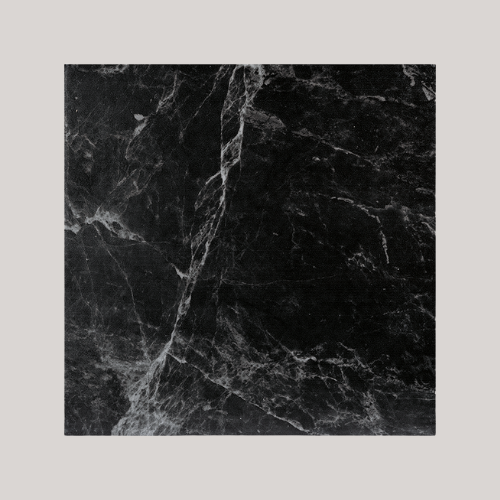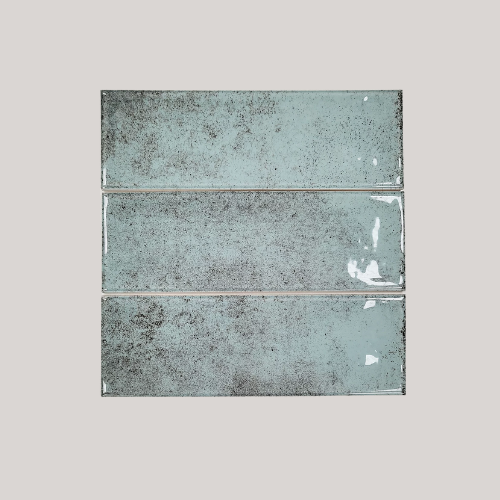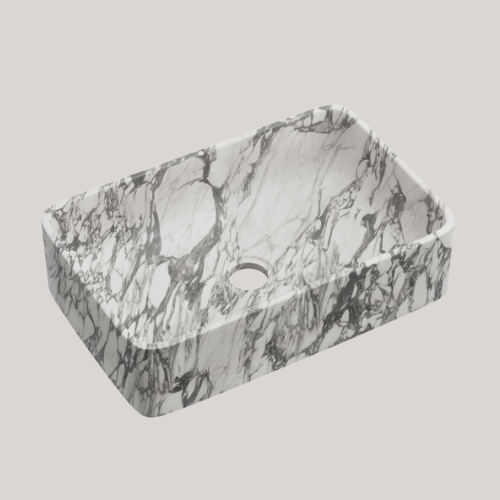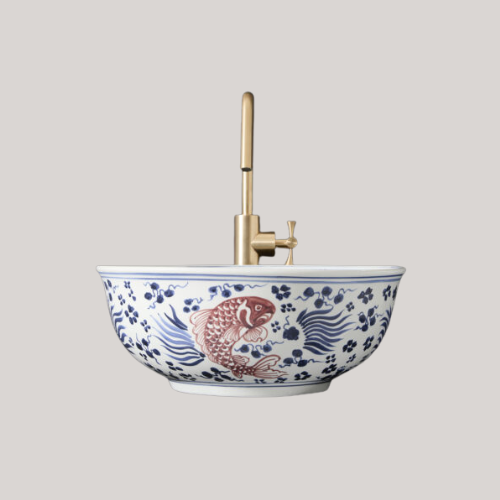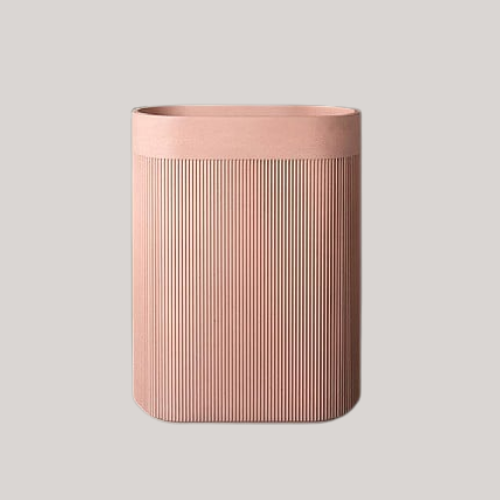These All-Tile Bathroom Basins Might Be the Most Creative Way to Design a Vanity Right Now, but I Want You to Know These Things About Them, Practically
Is it worth the trouble? The experts dive into the pros and cons of this eye-catching design

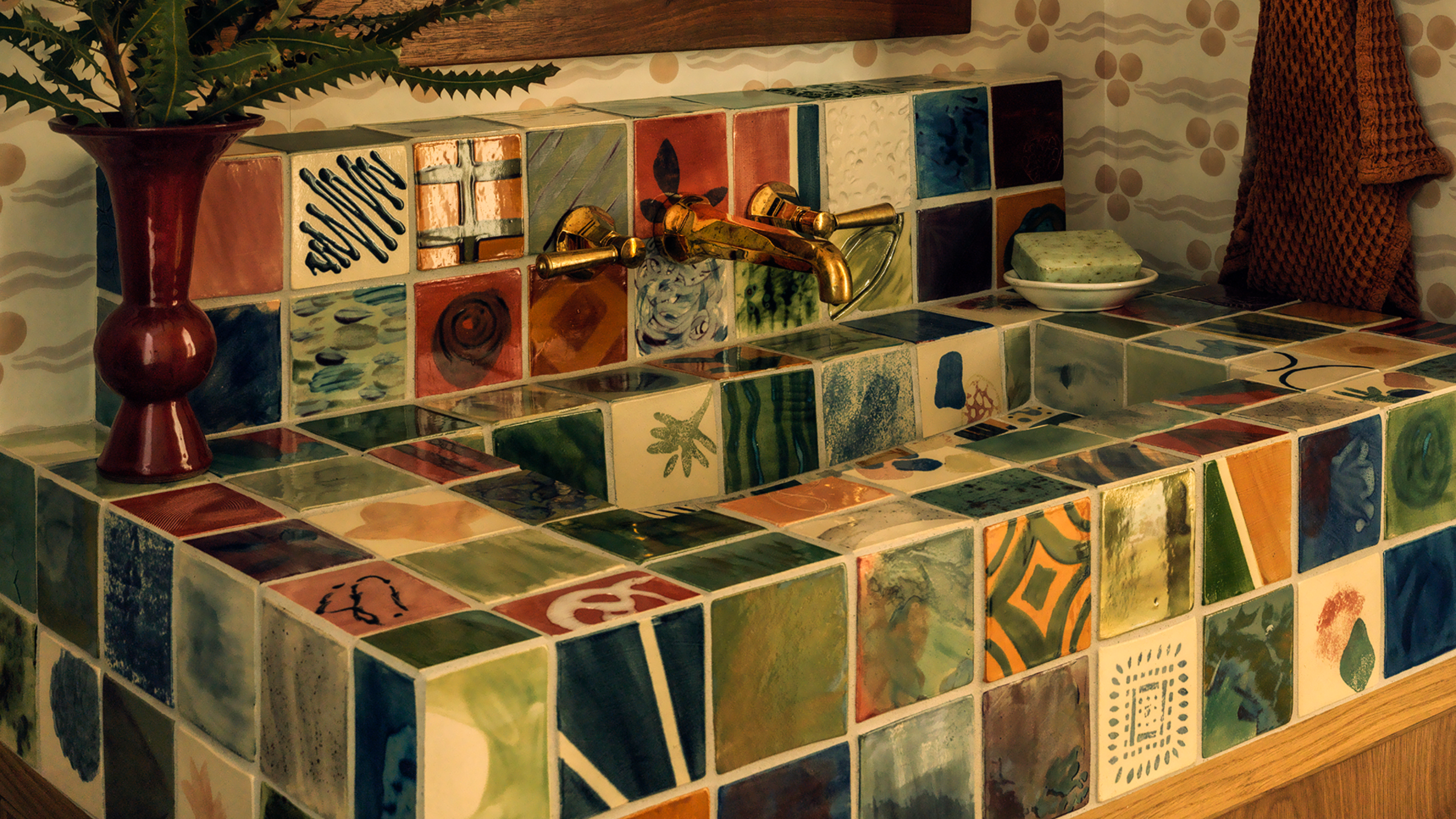
As someone who looks at new, gorgeous bathroom designs every day for their job, there's not much you can do with a tile that will come as a surprise to me. I've seen them used sparingly, liberally, and everything in between.
And while tile-drenched showers and baths have become practically commonplace, we're seeing much more exciting all-tiled basins and vanities become a big bathroom trend only really now.
But, it must be said, there might just be a reason behind its delayed popularity. Because, as beautiful as this trend looks on the surface, it is not without its problems. And the experts are ready to spill it all.
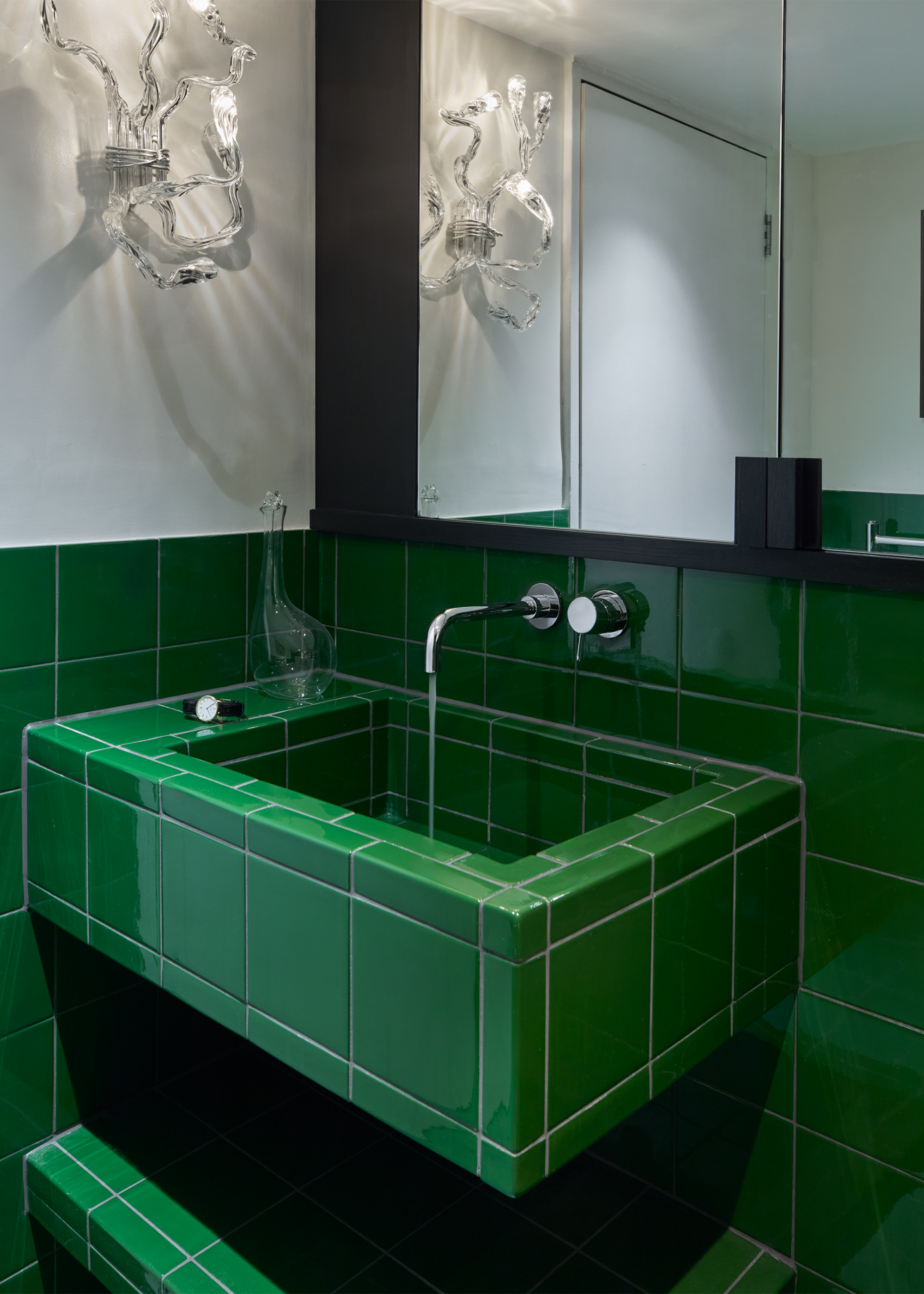
When bathroom sinks are so often devoid of personality, a full-tiled look can feel somewhat like a revelation.
Despite their typically lack-lustre appearance, its impossible to remove the presence of a sink from your daily routine, so bringing some excitement to its design can help brighten up your day-to-day. As Victoria Sass from Prospect Refuge Studio says, "Think about how much time you spend looking down at your sink basin - washing your hands, brushing your teeth - it’s such a wonderful opportunity to bring a little joy into your everyday routines."
Tiles have long been an easy way to bring a bit of visual excitement into your home, from tiled backsplashes to tiled borders around doorways, they bring texture, color, and life to the home, in an understated, elegant way.
Fully tiled sinks, however, feel like a more surprising, modern design. They can easily become the focal point in a bathroom or kitchen. "I think they’re great for a powder room sink or at a restaurant bathroom where they can really be a feature," says designer Leendert de Vos. In smaller spaces like the ones mentioned by Leendert, it is easier for these designs to play their role of focal point.
The Livingetc newsletters are your inside source for what’s shaping interiors now - and what’s next. Discover trend forecasts, smart style ideas, and curated shopping inspiration that brings design to life. Subscribe today and stay ahead of the curve.
It is this eye-catching, statement-making quality that makes it such an appealing look for the designers. As Mike Whitfield, from Lusso, says, "A tiled bathroom sink is a showstopping design statement, and embraces multiple current trends in interior design, including retro revival, and elements of Mediterranean inspired design. Tiled sinks or tiled sink surrounds, such as vanity units and backsplashes, offer a visually appealing focal point that can truly bring a bathroom to life."
Depending on the tiles you use, you can lean into these trends, with delicate, painted tiles being perfect for that dreamy Mediterranean feel, while high gloss, brightly colored types of tiles may work better for achieving that retro feel.
Erik Jan Kwakkel, from Dtile, is a big proponent for this look, saying "Of course, I recommend our tiled washbasins, because they can be made in different sizes, they are durable and inert, and they create a natural look, as if that is how it should be. Our tiles are made of stoneware, floor tile quality, and can therefore withstand a lot of impact, and when you use an epoxy grout in the joints, you have a sturdy, easy-to-clean washbasin."
What's not to love, right?
Architect, interior and furniture designer based in London, Leendert's approach to design always stems from a playful use of the everyday, creating work that is sustainable, sensitive, adaptive, and elegant. He grew up in Belgium and graduated as an civil engineer in architecture in 2017. After a year of designing and making furniture at Atelier Ternier in Ghent, he moved to London to work for Caruso St John Architects.
In 2022 Leendert started his studio, pursuing furniture and object design, architectural interventions, and scenography.
And What The Experts Want You To Know...
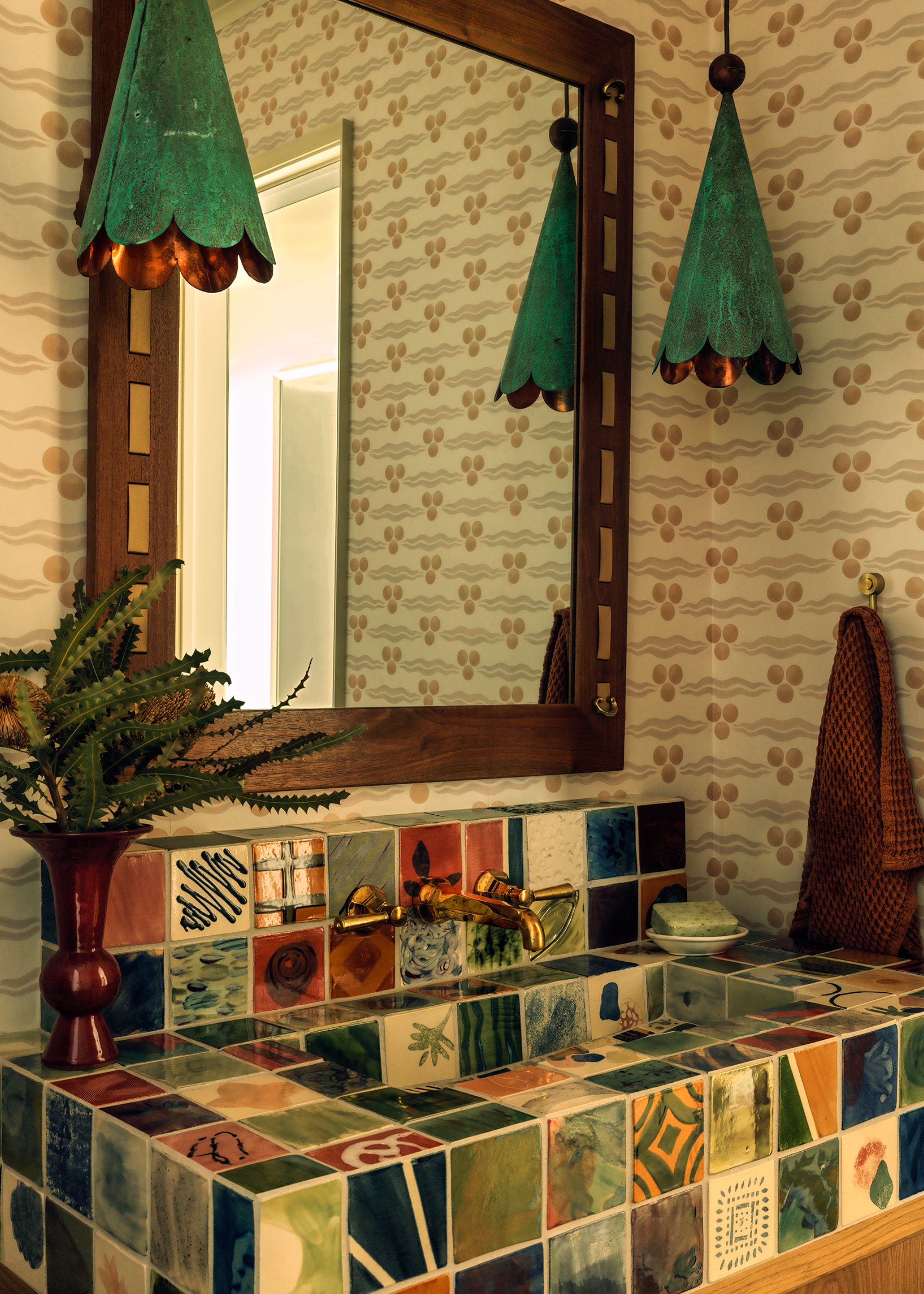
However, just because the experts love the characterful look of a tiled sink, this is not to say that the design is without its problems.
In fact, the issues are so prevalent some designers would recommend staying away from the design in its entirety. Jonathan Palley, CEO of Clever Tiny Homes, says, "Fully-tiled sinks are usually more trouble than they're worth. They can sometimes be serviceable in a secondary bathroom that gets minimal use, but they just won't hold up to heavy use in a kitchen or primary bathroom."
This view is mirrored by Leendert, who says, "As a personal bathroom sink I wouldn’t do it myself since there are some maintenance difficulties."
The first and foremost issue with this sink style is the problem of cleaning. As Jonathan notes, "Fully-tiled sinks will have lots of texture, nooks, and crannies that will retain soap scum, food waste, toothpaste, etc, all of which will need to be carefully cleaned on a regular basis."
This is not exclusive to a tiled sink of course, any tiled area runs the risk of sustained dirt build up, but in this smaller, controlled area, it can become more noticeable.
"The second issue is grout," Jonathan continues, "Even high quality, water-resistant grout is going to break down over time, meaning you run the risk of getting leaks unless you repair the grout."
Getting to grips with grout is one of the biggest challenges with tiling. As Victoria explains, "Grout is porous, so water will always find a way through. In our case, we built the tile up over a purchased sink basin so that any water seeping through the grout would still be directed back toward the drain." While solutions like this can offer a partial relief from the issue of grout, for the most part, it is inescapable.
Regular cleaning is a given with a grout-heavy design. "The constant exposure to water can lead to tiles and grout being prone to discolouring or staining, which is the main drawback of the style," says Mike, "To keep tiles looking at their best, you will need to clean them regularly to prevent the grout from losing its visual appeal. Regular light cleaning will allow you to keep on top of maintenance and prevent the tiles from losing their shine."
Though, even the cleaning process is not straightforward; "Because ceramic tiles are naturally fragile and hard, it is wise to handle them with relative care," says Erik. A delicate touch is essential when looking after your sink.
Before you can even get to the cleaning, you'll need to ensure you sink is built with these potential problems in mind, or else you'll find yourself regretting your choices.
"The bottom of the sink needs to be properly sloped," states Victoria, "If it isn’t, water will just sit and pool in the corners, which is both annoying and messy. Using a smaller tile helps here. The smaller the tile, the more flexible it is for following that slope without a ton of awkward cuts." However, the smaller the tile, the more grout lines, which can in turn lead to even more problems.
Plus, creating this slope is not as easy as it may sound, as Leendert explains, "Because of the internal rounded corners it’s hard to create a slope in the sink. This means it doesn’t perfectly drain all the water away and requires a bit of extra cleaning. Not a major issue, but something to take into account for sure. You could be cutting tiles and making it slope towards the drain, but that would affect the look quite a lot since you create extra lines."
Following a decade in commercial design, Victoria founded Prospect Refuge Studio. Specializing in residential interiors allowed her to draw inspiration from her past and channel the intimate and personal spaces that initially sparked her interest in design. She currently works and lives in Minneapolis with her husband, three children, and their dog.
How to Get The Look Without The Problems

However, these issues shouldn't be taken to mean this design should be disregarded entirely. It's just best to proceed with caution.
Firstly, the type of tiles you choose can make a significant difference. "When choosing tiles for your sink and sink surround, you should opt for large, water resistant tiles, such as porcelain or terrazzo," says Mike. He explains, "These tiles have less grout that can be stained, will not be damaged by exposure to moisture and require less overall maintenance."
The main lesson to bear in mind when recreating this design is the more grout, the more problems. So larger format tiles, with less visible grout lines will always be the safest choice.
"In areas that are exposed to large amounts of water, avoid choosing smaller tiles that require lots of grout, as this will increase the maintenance required to keep them clean. Instead, mosaic tiles and marble tiles should be made use of as part of a backsplash where they are less frequently exposed to moisture, but their beauty and aesthetic appeal can stand out as a focal point of the bathroom," Mike continues.
The issue of constant exposure can also be lessened by only using these designs in low-traffic areas. Victoria says, "I’d also reserve the idea for lighter-use spaces, like a powder room, rather than anywhere you’re doing dishes. There’s simply too much risk of cracking or chipping if something heavy slips."
Also, don't let peoples negative experiences scare you out of this design. "Just care for it the same way you would a tiled shower," recommends Victoria. "Tile is incredibly durable and easy to maintain. If you’re concerned about water absorption, have the grout sealed to give yourself a little extra peace of mind. From there, it’s simply a matter of resealing as needed, somewhere between six months to a few years, depending on how frequently the sink is used."
If the image of stained grout is enough to put you off this design completely, worry not, as we have plenty of grout-free sink design ideas for you to lust over instead. Like the sweet sink skirt, or even the striking trough sink.

Maya Glantz is a Design Writer at Livingetc, covering all things bathrooms and kitchens. Her background in Art History informed her love of the aesthetic world, and she believes in the importance of finding beauty in the everyday. She recently graduated from City University with a Masters Degree in Magazine Journalism, during which she gained experience writing for various publications, including the Evening Standard. A lover of mid-century style, she can be found endlessly adding to her dream home Pinterest board.
